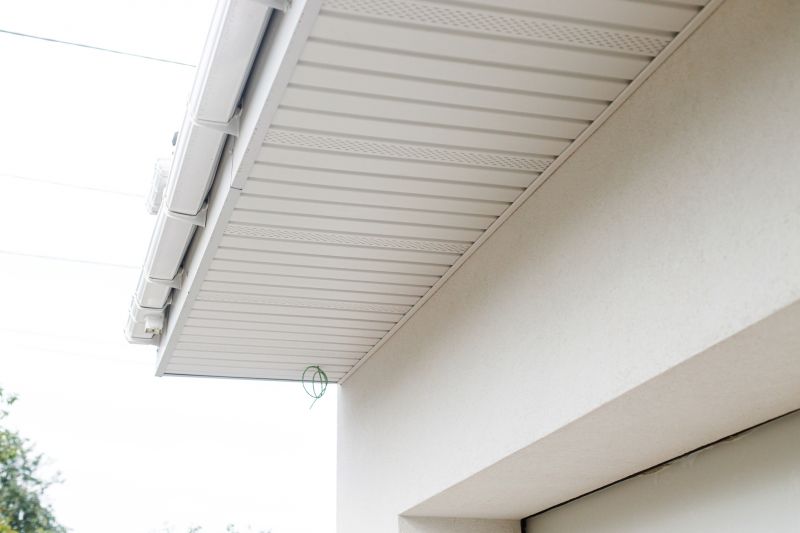Ultimate Guide To Soffit Installation Products For Homeowners
Learn about essential soffit products that provide reliable performance, aesthetic appeal, and long-lasting protection for your property.
 Soffit installation products are essential components in the construction and renovation of roofing systems, providing both functional and aesthetic benefits. These products help in ventilating the attic space, preventing moisture buildup, and improving the overall airflow beneath the roof deck. Selecting the right soffit materials can influence the durability, appearance, and maintenance requirements of a building. Whether for new construction or remodeling projects, understanding the variety of available options ensures that homeowners and contractors can make informed decisions tailored to their specific needs.
Soffit installation products are essential components in the construction and renovation of roofing systems, providing both functional and aesthetic benefits. These products help in ventilating the attic space, preventing moisture buildup, and improving the overall airflow beneath the roof deck. Selecting the right soffit materials can influence the durability, appearance, and maintenance requirements of a building. Whether for new construction or remodeling projects, understanding the variety of available options ensures that homeowners and contractors can make informed decisions tailored to their specific needs.
Top Overall Option
Aluminum Soffit Panels
Aluminum soffit panels are widely appreciated for their durability, resistance to weather elements, and low maintenance requirements. They are available in various colors and finishes, allowing for customization to match building aesthetics. Easy to install and lightweight, aluminum soffits can provide long-lasting performance in different climates, making them a versatile choice for many projects.
Types of Products For Soffit Installations
Aluminum Soffit Panels
Durable and weather-resistant panels suitable for various architectural styles.
Vinyl Soffit Boards
Lightweight and easy to install, with excellent resistance to pests and rot.
Wood Soffit Panels
Traditional aesthetic, customizable with paint or stain, ideal for historic or craftsman styles.
Composite Soffit Materials
Combines durability and aesthetic flexibility, often resistant to moisture and pests.
Vented Soffit Panels
Designed with built-in vents to promote airflow and reduce moisture buildup.
Non-Vented Soffit Boards
Primarily used for aesthetic purposes or areas where airflow is less critical.
Fascia Boards
Support the soffit and provide a finished look to roof edges.
Soffit Vent Screens
Protect vents from pests while maintaining airflow.
Insulated Soffit Panels
Help improve insulation and energy efficiency of the attic space.
Perforated Soffit Panels
Allow for ventilation while providing some protection from debris and pests.
Decorative Soffit Trim
Adds aesthetic detail and finishing touches to soffit areas.
Metal Soffit Vents
Provide ventilation options that can be integrated into various soffit styles.
Popular Choices
Known for their longevity and minimal maintenance, aluminum soffits are often selected for their durability.
Favored for affordability and ease of installation, vinyl soffits are common in residential projects.
Popular for promoting attic ventilation and reducing moisture concerns.
Chosen for traditional aesthetics, especially in historic or craftsman style homes.
Growing in popularity due to their combination of strength and visual appeal.
Commonly used in areas requiring ventilation with added debris protection.
Often paired with soffits for a finished and cohesive look.
Increasingly selected for energy efficiency benefits.
Popular for adding architectural detail and enhancing curb appeal.
Chosen for their durability and functional ventilation capabilities.
Soffit products come in a range of materials, including aluminum, vinyl, wood, and composite options. Each material offers distinct advantages in terms of ease of installation, weather resistance, and visual appeal. Aluminum soffits are known for their durability and low maintenance, making them suitable for various climates. Vinyl soffits are lightweight and resistant to pests and rot, often favored for their affordability and ease of installation. Wood soffits provide a traditional look and can be customized with paint or stain, but may require more upkeep over time. Composite soffits combine features of multiple materials, offering enhanced strength and longevity.
In addition to material choices, soffit products also vary in design, venting options, and installation mechanisms. Some soffits include built-in vents to facilitate airflow, while others are designed for aesthetic purposes with minimal ventilation features. The installation process can range from straightforward snap-on panels to more complex systems requiring professional fitting. Proper selection and installation of soffit products not only contribute to the building’s structural integrity but also influence energy efficiency and interior comfort. When choosing soffit products, considering factors such as climate, maintenance preferences, and architectural style can help in making the most suitable choice.
Key Buying Considerations
- Material durability and resistance to weather elements
- Compatibility with existing roofing and siding materials
- Ventilation needs and whether vents are integrated or separate
- Ease of installation and whether professional help is required
- Maintenance requirements over the lifespan of the product
- Aesthetic preferences and color options
- Cost and overall budget constraints
- Building codes and local regulations related to ventilation
- Compatibility with insulation and energy efficiency goals
- Pest resistance features, especially for vented products
- Availability of accessories like vent screens or trims
- Longevity and warranty options
- Environmental factors such as exposure to saltwater or extreme temperatures
- Ease of cleaning and upkeep
- Compatibility with architectural style and design preferences
